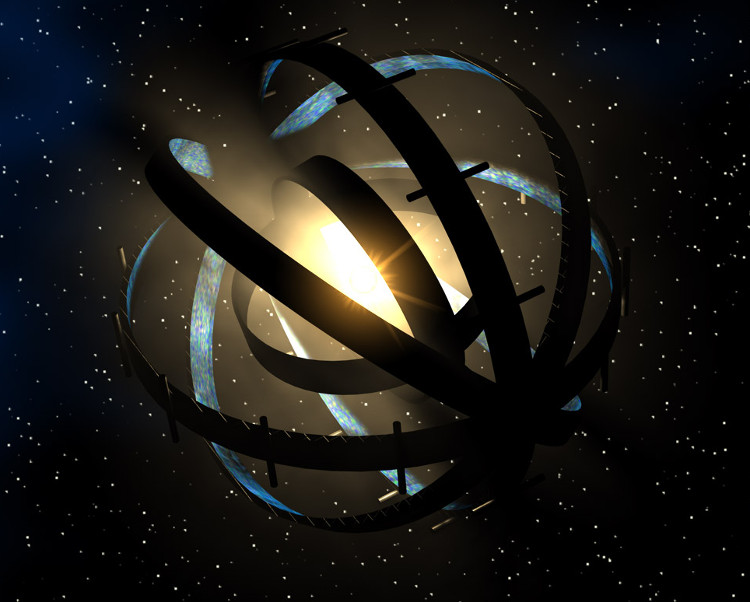Strange star makes scientists lose sleep
A strange star that constantly changes the brightness makes scientists have to come up with a lot of hypotheses to explain it.
Recently, a group of scientists hypothesized to be considered the closest to reality.
For more than a year, scientists have been puzzled by an unusually dark cycle from a star called KIC 8462852. This cycle is very strange, never seen before. An astronomer even offers the possibility that it is an "alien building" that is stirring up the atmosphere around.
Now, after some hypothesis that does not convince the scientific community, a new explanation is given, relating to the end of life of a planet.
Columbia University researchers say that KIC 8462852 has "swallowed up" a planet, and the flash of light we see is due to the remnant of the planet or the planet's satellite sometimes. obscure the light.
This may explain both the sudden and sudden dimming of light, as the light of the star diminishes when observed between 1890 and 1989.
Normally, if a star has a planet around it, its brightness will decrease by 1% cyclically, but KIC 8462852 - otherwise called "Tabby's Star" - has experienced an unusually deep decline. up to 22%.

Star Tabby Simulation.
Immediately, scientists speculated that this big difference was due to something huge swirling around Tabby Star.
The Columbia University team said that if KIC 8462852 is absorbing a planet, the energy released will cause a sudden increase in light. Therefore, we are seeing that only KIC 8462852 can return to normal after absorbing a planet, with some remaining rock.
Researchers estimate that the collision between stars and planets may have occurred about 10,000 years ago. The faintness suggests that today KIC 8462852 may just be digesting its meal.
In order to hypothesize, the team performed the previous results on KIC 8462852 and the outer space hypotheses such as Kozai Mechanism , to find the orbital variants of orbiting satellites the planets.
Researchers also doubt the type of stellar collision and this planet may be more popular than what we thought before, if their calculations are accurate.
"With what we see in the current Sao Tabby, an estimated 10 planets like Jupiter collide with the star, or maybe even more," said lead researcher Brian Metzger.
Scientists will closely follow this star with other theories, if there is new data, because it is not easy to keep an eye on a planet a thousand years away from light.
Another hypothesis is also quite interesting: many other scientists think that flashing light from KIC 8462852 can be caused by cosmic debris somewhere on the way from star to Earth.
And we will not be surprised if there are many more confusing hypotheses about this particular story. However, this "star-swallowing" hypothesis certainly fits the facts we know today.
"This research poses a credible absorption scenario. I think this is the best hypothesis to explain the star," astrophysicist Jason Wright of Pennsylvania State University, who does not attend Join the research team, said.
- Detecting ripples 'strange never seen' around a star
- 1 night sleeplessness also makes the 'shut down' brain temporarily!
- Discover a special brain area that keeps you awake
- 7 mistakes when going to bed makes you stay awake all night
- How the strange star reveals the Sun will
- 5 ways to help you sleep well
- 10 most strange sleep disorders
- Benefits of good sleep
- The secret to better sleep
- Why the more insomnia, the more difficult you sleep?
- Want to lose weight? Sleep a lot!
- How to lose sleep?
 Van Allen's belt and evidence that the Apollo 11 mission to the Moon was myth
Van Allen's belt and evidence that the Apollo 11 mission to the Moon was myth The levels of civilization in the universe (Kardashev scale)
The levels of civilization in the universe (Kardashev scale) Today Mars, the sun and the Earth are aligned
Today Mars, the sun and the Earth are aligned The Amazon owner announced a secret plan to build a space base for thousands of people
The Amazon owner announced a secret plan to build a space base for thousands of people